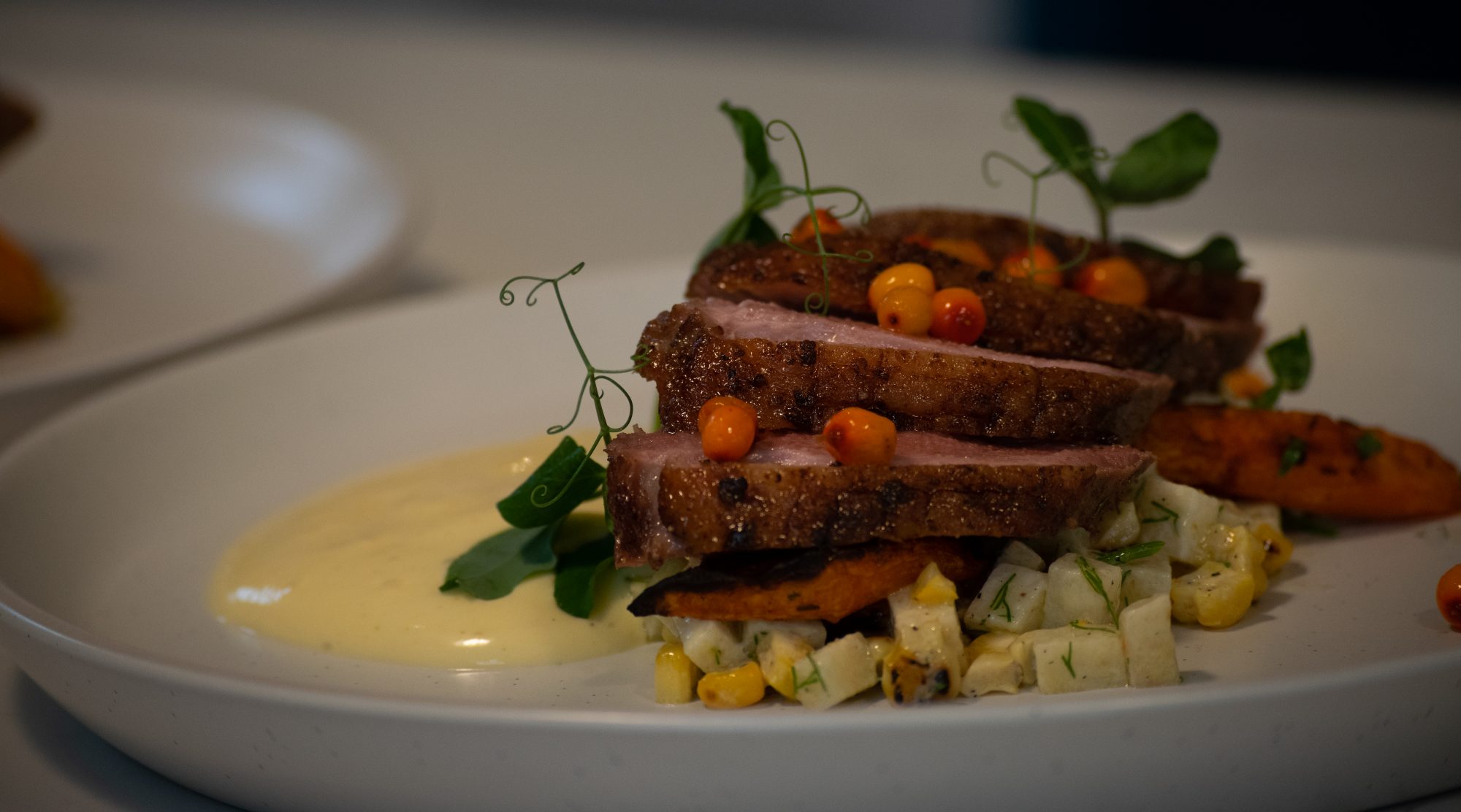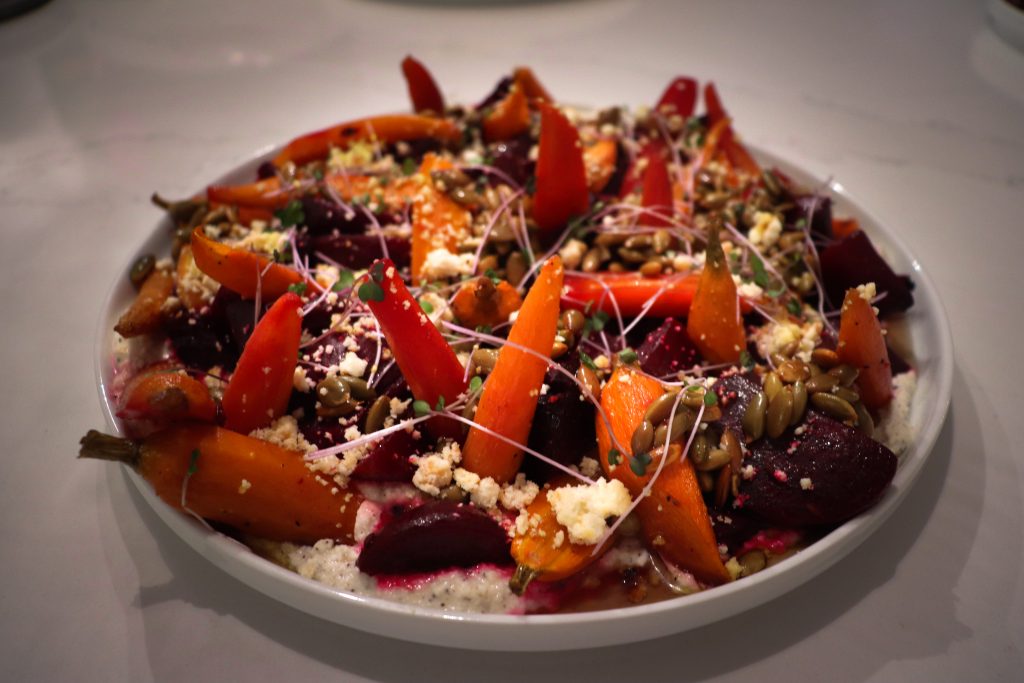Does a beautifully presented plate appeal to you? Yes, it’s not a cliché, the first experience of food indeed is how it looks & how ingredients are followed by its aroma and finally the taste. The art of the plated dinner is too important because the wonderfully presented food is the source of stimulating the appetite of the diners.
That’s why it’s compulsory to make sure the presentation of food is, therefore, because it’s crucial for creating the expectations and an appetizing and memorable dining experience.
And, If you ask any of the talented chefs at Supper Club YVR, they will give you a resounding yes.
The reasons for beautifully presented plated dinners are unlimited if we give it a thought. Because it allows the person to begin anticipating the flavours of a particular dish before you take the first bite, boosting anticipation and the overall dining experience.
Well, well, well…
The art of beautifully or attractively presenting a dish is called “plating” in the world of the restaurant industry.
As we all know! For a chef, cooking is not just a profession, it’s more than that. To them, it’s an art as well as a science. The plate is a blank canvas for them and the chef is free to showcase his masterpieces through plating. Because they want to present the most appealing food to their guests or customers.
Food presentation is an art that should be crafted artistically. Today chefs across the world, create their own style whether it’s a minimalist style or theme-based styling. However, This magical art includes; cooking, ornate cutlery, mini portions, a designer spray of sauces, fresh ingredients like salad leaves, sliced carrots and tomatoes, sprouts etc. for garnishing, all these add to the attractiveness of the dish.
But are the key factors that should keep in mind during ‘plating‘. They are as follows:
Supper Club YVR: Simplifying The Art of Plated Dinner

Here, we’ll tell you the secret of the beautiful plated dinner that we use at Supper Club YVR.
1. Compose the plate as if it’s a piece of art:
When a painter produces an artwork, he or she takes into consideration the structure of the item before placing brush & colours on canvas.
A chef is no different! they will also consider the plate as a blank canvas, considering what might fascinatingly complete the area.
Sometimes, it might be a minimal approach, presenting elements with plenty of white space around the plate, whatever the shape is. There’s no one or fixed approach that is better than another; a chef will have a variety of different plating structures for various menu items to keep things intriguing.
2. Get creative with colour:
A splash of colour can make a plate of food come to life. For instance, on the plate shown above, a cut of meat presented alone could look a little too…well, earth-toned if presented all by itself. However, the addition of vibrant greens not only adds a contrasting texture and flavour to the meal but an appealing visual element to the plate itself.
A sprinkle of colour or shade can make a plate of food come to life. As an example, on the plate revealed above, a cut of meat offered alone might look a little too… well, earth-toned if provided all on its own. Nevertheless, the enhancement of vivid greens not just includes a different appearance and also the taste of the dish, yet an appealing aesthetic component to the plate itself.
3. Consider the vessel:
In terms of plating, form satisfies function when it pertains to the actual vessel utilized in the food in question. First and foremost, a chef has to choose a plate or bowl that “works” for a specific dish. For example, our Spicy Grilled Octopus is served with fermented chile, crunchy garlic, marble potatoes, as well as cilantro aioli. In this case, a shallow bowl functions far better than a flat plate, as it gives the dinner lots of areas to explore every active ingredient.
4. Don’t make it too tall or wobbly:
Sure, a sushi roll stacked sky-high on a plate would look amazing. However, if it were stacked in such a way, it would certainly be ridiculous. Servers would certainly be prone to spilling it before providing it to the table; if it didn’t fall, chances are the diner wouldn’t even know where or exactly how to start consuming. Chefs should not end up being so stressed with the suggestion of a dish looking “awesome” that it gives up the high quality of the real eating experience.
5. Employ contrasting textures:
A combination of textures on a plate includes excitement to the visual appeal of any kind of dish. For instance, our sushi rolls are typically garnished ahead with a contrasting active ingredient to add not just an amazing taste component yet additionally include an aesthetically enticing structure. In the above photo, you can see how the crunchy garnish ahead makes the rolls interesting and attractive!
6. Create a focal point or points:
Making use of a striking aesthetic element (or numerous components) on the plate can help develop a centrepiece for the eyes to settle upon. The above picture is a fantastic picture of this principle. While the abundant pink fish is undoubtedly gorgeous, it acts even more like a visual pattern on home plate. Nevertheless, by including tiny garnish atop each piece, all of a sudden the recipe has plenty of visual intrigues. The eyes go right to these little centrepieces, which draw the eye to the lovely, fresh fish. It heightens the overall experience and also makes the home plate more intriguing.

7. Garnish with care:
Yes, having a centrepiece or a dash of shade using garnish can enhance the visual charm of a dish. Nonetheless, garnishes should be picked with care. Not just are they employed for aesthetic appeal, yet preferably, they ought to work with the tastes of the recipe. For example, while mint leaves might be wonderful, they’re not likely to taste great in addition to our wild mushroom and potato gnocchi; the flavours simply would not make sense.
8. Be consistent:
When producing a style of plating a recipe, a chef might try out the structure. Nonetheless, when she or he has decided on a design of plating, it is necessary to be constant in composing the dish in the same design after that. Not just does this serve as “branding” for the recipe, but if somebody loves it and orders it again, they’ll be looking forward to the discussion they enjoyed last time!
Still, you want more consultation from an expert or you want catering services for plated dinner, drop your query here.



One thought on “Simplifying The Art Of Plated Dinner”